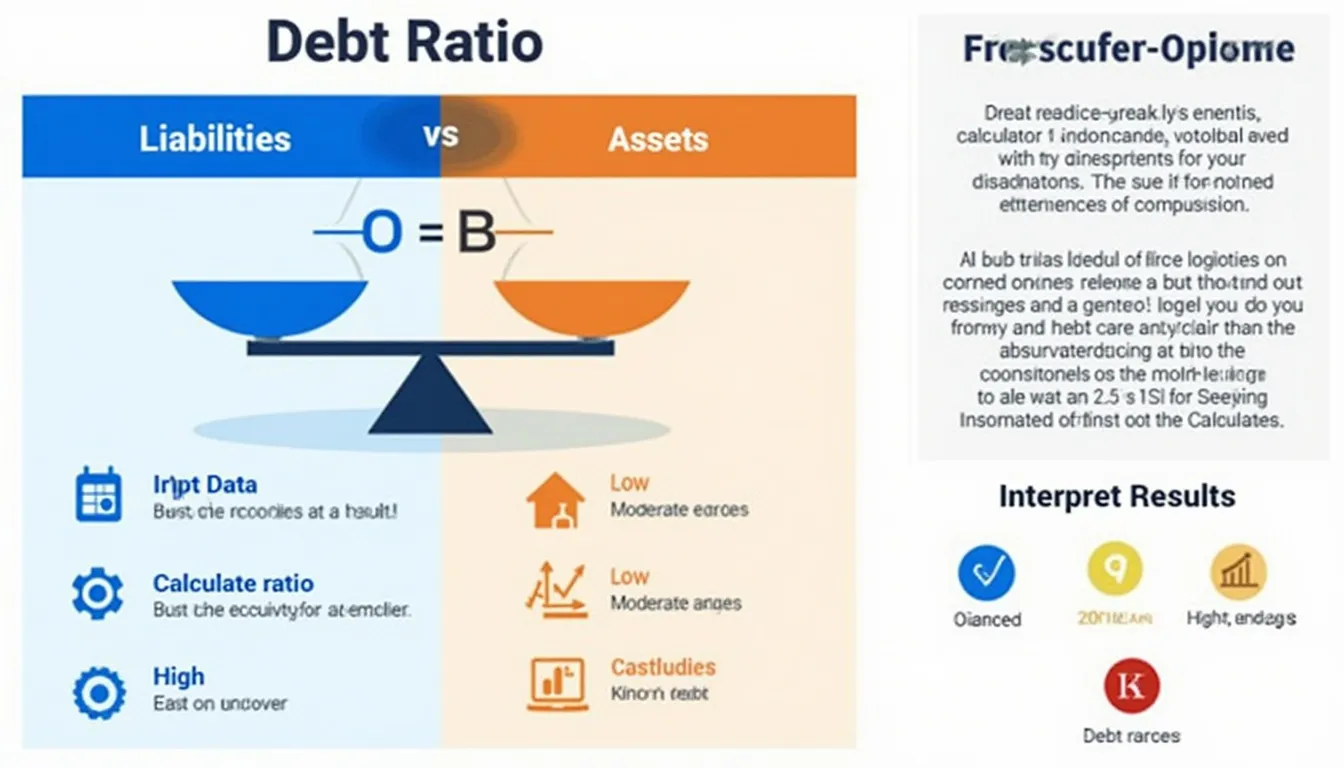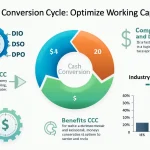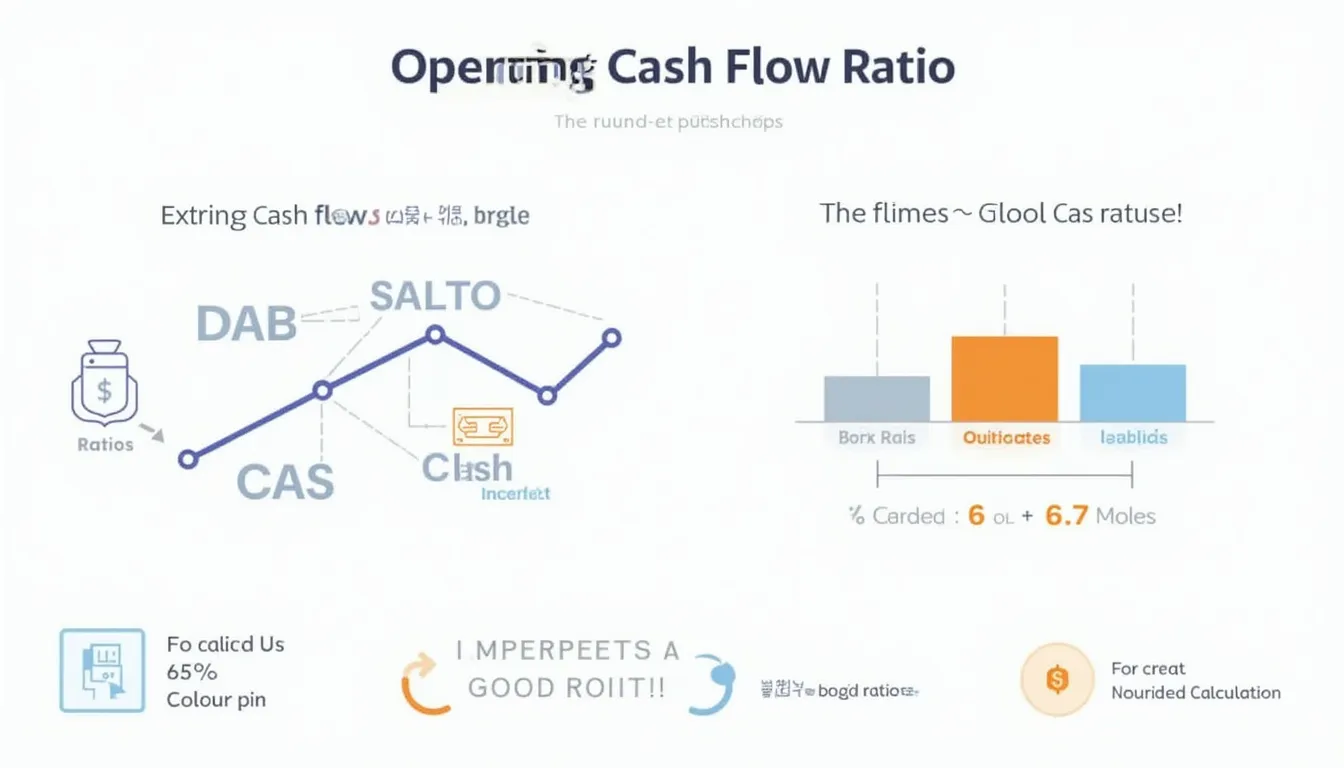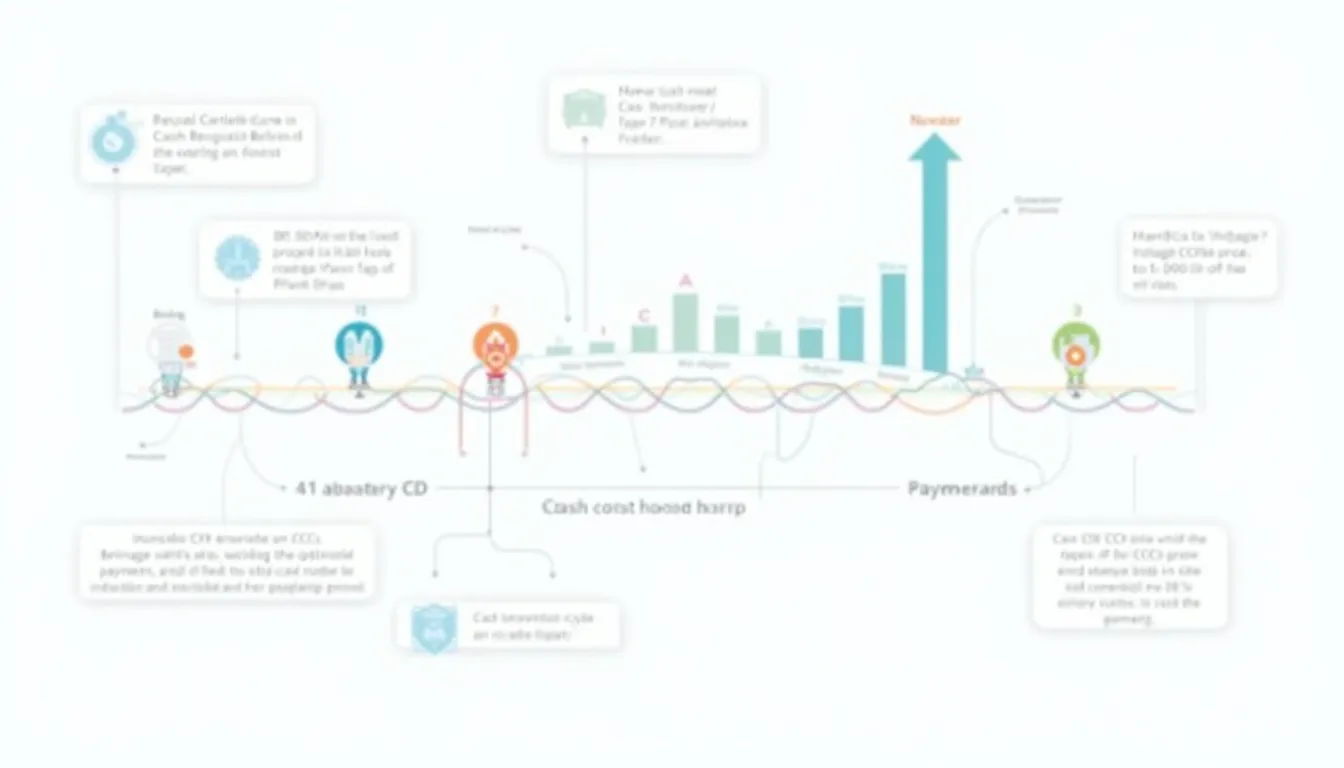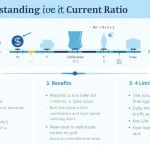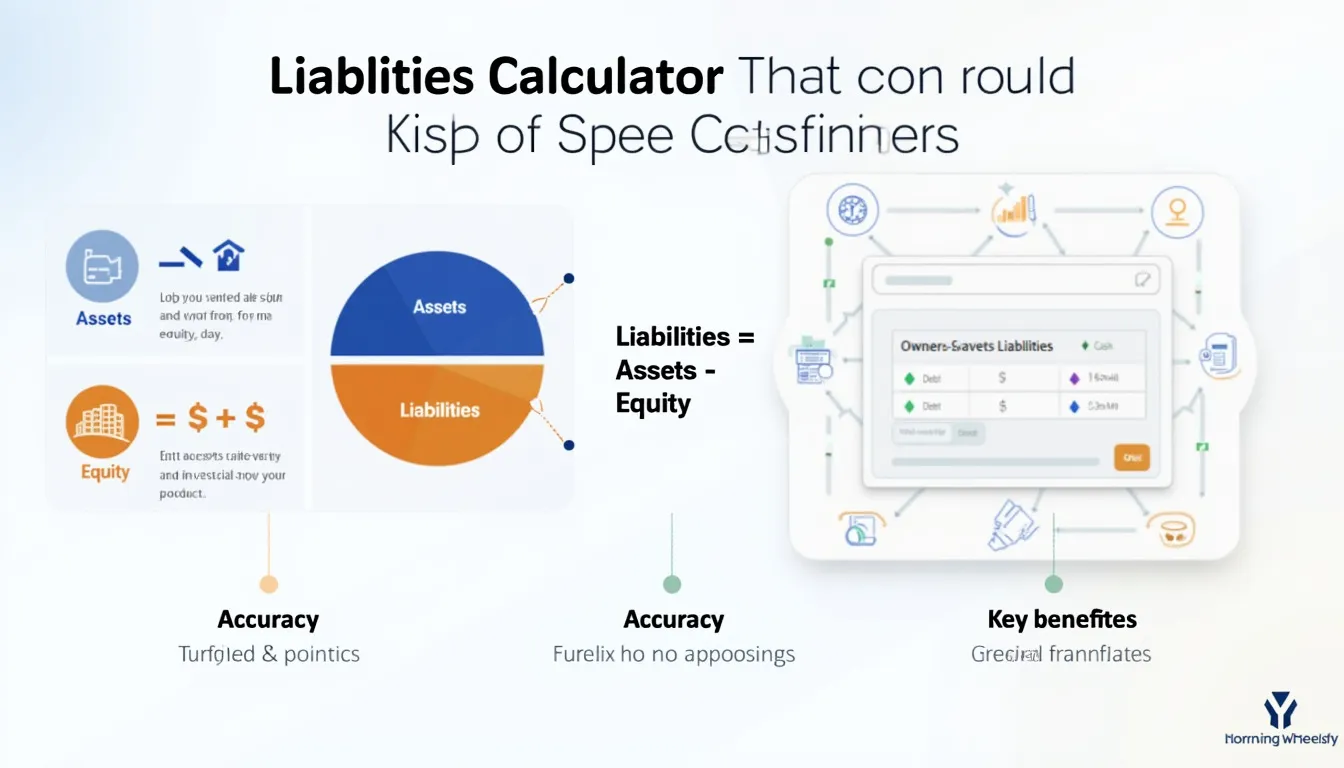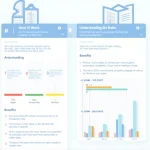Debt Ratio Calculator
Is this tool helpful?
How to use the tool
- Enter Total Liabilities – add every outstanding obligation. Example inputs: 210 000 or 95 000.
- Enter Total Assets – include cash, inventory, property, investments. Example inputs: 320 000 or 310 000.
- Press “Calculate” – the calculator shows your debt ratio and a short interpretation.
- Read the result – use the guide below to judge financial health.
Formula & checked example
The calculator applies:
$$\text{Debt Ratio} = rac{\text{Total Liabilities}}{\text{Total Assets}}$$
- Input 210 000 liabilities and 320 000 assets → $$ rac{210\,000}{320\,000}=0.66$$ (rounded).
- Input 95 000 liabilities and 310 000 assets → $$ rac{95\,000}{310\,000}=0.31$$.
Interpretation scale
- < 0.40 – low leverage, strong balance sheet.
- 0.40 – 0.60 – moderate leverage, monitor.
- > 0.60 – high leverage, consider de-leveraging.
Quick-Facts
- Median U.S. non-financial debt ratio: 0.47 (Damodaran, 2023, https://pages.stern.nyu.edu/~adamodar).
- A ratio > 1 means liabilities exceed assets (Investopedia, https://www.investopedia.com/terms/d/debtratio.asp).
- Utilities commonly run 0.60-0.70 to fund capital assets (Moody’s Industry Outlook, 2022).
- Figures must use consistent currency per GAAP ASC 830 (FASB, 2023).
- “Assets are resources controlled by the entity” (IFRS Conceptual Framework, 2021).
FAQ
What is the debt ratio?
Debt ratio expresses the share of assets financed by liabilities, revealing leverage and solvency (Investopedia, URL).
How do I calculate it without the tool?
Divide total liabilities by total assets; both figures from the same date and currency (FASB ASC 830).
Why is a value below 0.40 considered safe?
Historic bankruptcy studies show most solvent firms keep ratios under 40 % (Altman, 1968 Z-score study).
Can the ratio be negative?
No. Liabilities and assets are non-negative accounting values, so the quotient cannot drop below zero (IFRS, 2021).
How often should you update it?
Quarterly financial statements provide fresh liability and asset data, matching SEC filing cadence (SEC Form 10-Q guide).
Which sectors tolerate higher ratios?
Utilities and telecoms average 0.60-0.70 due to stable cash flows (Moody’s Outlook 2022).
How does a high ratio affect borrowing costs?
Lenders raise interest when ratios exceed peer medians, adding 50-150 bps risk premium (S&P Global Market Intelligence 2023).
Debt ratio vs. debt-to-equity—what’s the gap?
Debt ratio compares liabilities to assets; debt-to-equity compares liabilities to shareholder equity (Corporate Finance Institute, URL).
Important Disclaimer
The calculations, results, and content provided by our tools are not guaranteed to be accurate, complete, or reliable. Users are responsible for verifying and interpreting the results. Our content and tools may contain errors, biases, or inconsistencies. Do not enter personal data, sensitive information, or personally identifiable information in our web forms or tools. Such data entry violates our terms of service and may result in unauthorized disclosure to third parties. We reserve the right to save inputs and outputs from our tools for the purposes of error debugging, bias identification, and performance improvement. External companies providing AI models used in our tools may also save and process data in accordance with their own policies. By using our tools, you consent to this data collection and processing. We reserve the right to limit the usage of our tools based on current usability factors.
